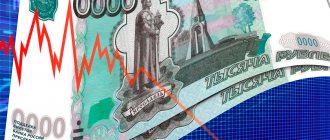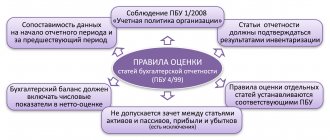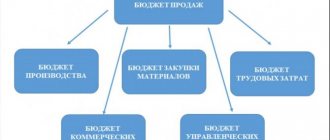By setting the price of a product or service, the company wants to get maximum profit and ensure the desired sales volume. For its part, the client is looking for where to buy at a profit.
The pricing methods used solve several problems: to help the enterprise determine what markup on the cost of production will be optimal, which product will give more profit, and which one is better to produce in smaller volumes. These are the main, but not the only tasks of pricing.
The set of marketing activities includes the development of a pricing policy, and the key element is price formation. Depending on what pricing methods are used at the enterprise, the process consists of different stages, but it is always multi-stage.
There are two theories that explain the essence of prices and pricing in different ways. The first, which is called cost, states that the cost of a product is determined by its value in the eyes of the consumer. The second suggests relying on the costs that the company would incur if resources were used optimally. In this case, the value of a product or service should be determined by the consumer. In this case, the cost is determined taking into account utility.
The concept of market price for tax purposes
The amount of tax payments depends directly on the price set for a specific product, as a result of which the state has a direct interest in maximizing measures aimed at monitoring the correct formation of prices by sellers in terms of compliance with their prices set on the market.
Thus, tax regulation of the pricing mechanism is carried out, in which price is an instrument of tax regulation.
The principles for determining the price of goods, works or services for tax purposes are established by the Tax Code of the Russian Federation. According to its norms, the market price, which is used for tax purposes, is the price of a product that has developed under the influence of supply and demand under certain conditions for a certain product.
In this case, identical goods are taken as the basis. If there is no identical product on the market, homogeneous products are used as a reference point, while comparing the economic conditions in which they are sold.
In the process of tax regulation, the legislator establishes the need to control the correctness of price determination with subsequent adjustment of the price of goods sold for the purpose of correct taxation. The possibility of tax regulation of prices is secured by the provisions of Article 40 of the Tax Code of the Russian Federation.
In accordance with the requirements of this article, the market price is recognized as the correct value that should be used for taxation. The definition of this concept established by tax legislation is used for tax control purposes.
Analysis of pricing methods and factors influencing their choice
A marketing strategy, which begins before the promotion of a product or service, includes the study and comparison of basic pricing methods.
For most products and services, price is one of the main parameters that the audience looks at. If you assign prices haphazardly, this will lead to the fact that the products will not sell well or the company's activities will be unprofitable. Therefore, it is necessary to choose a pricing method that suits your specific situation.
Problems that can be solved by choosing the optimal pricing scheme:
- Compensation for costs of manufacturing goods, providing services or intermediary actions. In addition to covering expenses, it is important to ensure that profits are sufficient for the functioning and development of the organization.
- Assignment of cost taking into account the interchangeability of products. The consumer may choose a more expensive product if there are no analogues with the same level of quality, or prefer a product at a low price if it suits its characteristics. It is pointless to justify a high price with the company's costs: the audience will not take this into account.
All pricing models that are used now are divided into 2 groups: market and government. The first are those in which entrepreneurs find the optimal balance of supply and demand. The latter are subject to government regulation: prices are set by authorized bodies, and the cost is taken as a basis.
Commercial non-state enterprises use market pricing models. The cost of products or services is subject to regular adjustment: the market situation changes, and if the price remains unchanged, this will lead to a critical decrease in turnover or work at a loss.
Pricing stages prior to choosing a method:
- determination of pricing policy objectives;
- demand analysis;
- calculation of fixed and variable costs;
- collecting information about competitors' prices.
When all the data has been received and analyzed, a method is chosen.
Pricing rules that must be followed regardless of the chosen strategy:
- the price is set for each new product;
- the relationship between positions within one product group is maintained;
- similar proposals from competing organizations are taken into account;
- prices are periodically reviewed and adjusted;
- When forming a price, they take into account the possibility of discounts.
These rules form our own approach, which does not go beyond the generally accepted approaches to pricing and fits into the concept of pricing.
There are several factors that are important when choosing a method. The selling price should include not only all costs, but also profit. A group of goods must contain items with different selling prices, depending on the set of characteristics. This will allow the audience to orient themselves.
For manufacturers, intermediaries, services providing various services and other business representatives, the determining factors when setting prices are not the same.
Depending on this, methods are divided into 3 groups:
- Parametric. The pricing system takes into account cost standards for providing the required characteristics.
- Market, involving free pricing. Focus on the situation.
- Expensive. The determining factor is the cost of production or intermediary activity.
During the pricing process, the selling price for each item of goods and services is determined. They take into account the possible reaction of consumers, which manifests itself in the form of changes in demand, and all components of marketing: sales channels, promotion costs, product parameters (including external ones), audience segments, the state of the industry and the market as a whole.
Correct application of transaction prices
The correctness of the price applied by the parties to the transaction is subject to control by the tax authorities. It is carried out according to the following scheme:
- the possibility of exercising the right of tax authorities to control the correct application of prices for a specific transaction is established by law;
- The market price is calculated based on identical or homogeneous goods. The calculation is made using one of the methods for determining market prices established by law;
- displays the negative difference that exists between the original and market prices of the goods sold.
- the calculated negative difference is compared with the market price;
- if the comparison shows that the sales price is more than 20% higher than the market value of similar goods, then the entire sales volume is subject to recalculation at the market price for the purpose of correct taxation;
- the resulting arrears in tax payments are calculated. Its value is the difference between the tax liabilities calculated by the taxpayer based on the volume of sales at the prices agreed upon in the contract and the market price for the sale of the corresponding batch of goods;
- the penalty for arrears resulting from underpayment of tax liability and penalties are calculated.
The procedure for determining the market price interval
The interval of market prices is always expressed in a unique selection of indicators, which are arranged in a special established order - from the minimum value to the maximum.
If information on several comparable transactions is available, the following method and calculation procedure is applied:
- available data on transactions that form the totality of available price marks is ordered in ascending order - from the minimum to the maximum number, while each indicator is simultaneously assigned an individual serial number;
- the calculation and justification of the minimum interval is carried out by adding all the sums of indicators and then dividing them by 4. When receiving the results in the form of an integer, its value is taken as the serial number of the existing similar value. Then, the value of the next sequence number is taken as the minimum value. If, as a result of division by 4, the result turns out to be a fractional number, the integer part of this resulting number is taken as the basis;
- the justification for the maximum value of the interval is based on multiplying the total sample amount by the number 0.75. The following procedure is similar to the procedure for calculating the minimum value;
- in the case of determining a comparable transaction price in relation to exchange-traded goods, the interval will be determined based on the average prices of transactions that were carried out on a particular exchange, based on officially published information in relevant sources. In this case, the price interval will be recognized as the interval of the minimum and maximum value of transactions that was registered on the exchange in a certain time period;
- if information from information and pricing agencies is used, the minimum and maximum values of prices for transactions that were completed in a similar time period and on comparable conditions can be taken into account.
The concept of the market price of a product
The concept of the market price of goods is given by Article 40 of the Tax Code of the Russian Federation. The provisions of this article recognize the market price of a product as the price that corresponds to the price of an identical (homogeneous) product prevailing on the market under similar commercial conditions.
Similar (comparable) commercial conditions are those conditions under which existing differences do not affect the price of the goods, and can be taken into account using certain amendments (clause 9 of Article 40 of the Tax Code of the Russian Federation).
According to the provisions of Article 38 of the Tax Code of the Russian Federation, for tax purposes, any property that is sold or intended for sale can be recognized as a “good.”
The concept of the market for goods (works, services)
The market for goods, as well as works or services, is the sphere of circulation of such goods (works, services), which is determined based on the presence of such conditions:
- real opportunities for the seller of goods to sell his goods to the buyer without incurring significant additional costs. Sales of goods must be carried out on the territory of the Russian Federation as close as possible to buyers or abroad;
- real opportunities for the buyer to purchase the offered product without incurring significant additional costs. The purchase of goods must be made on the territory of the Russian Federation as close as possible to the buyers or abroad.
Market pricing methods
Market pricing is typically used in highly competitive markets.
Methods can be roughly divided into 2 groups: with an eye on competitors and with a focus on the consumer.
Pricing based on the economic value of the product
This method is based on determining the significance of a product or service for the consumer.
To calculate it, do the following:
- They determine which product or service, in the opinion of consumers, is the reference. Find its price or calculate the cost of use.
- They identify the characteristics of their product that distinguish it from the standard one. Advantages and disadvantages are recorded separately.
- They evaluate how critical each difference between the company’s product and the reference product is for the audience.
- Taking the indifference price as the calculated indicator, they add to it a positive and negative assessment of the value of each distinctive characteristic of the product.
To make it easier to understand how a price is formed based on economic value, we can consider an example with a fictitious product.
The company released a new tractor model and set the price at 24 thousand rubles. Competitors have similar equipment that costs 20 thousand rubles. The audience wonders why the price is higher.
Company representatives show calculations:
- 20 thousand rubles. — the cost of an analogue from a competing company (price of indifference);
- 2 thousand rubles. — extra charge for a high level of service;
- 2 thousand rubles. - premium for reliability;
- 3 thousand rubles. - longer service life than competitors;
- 1 thousand rub. - Long warranty on parts.
This creates a price of 28 thousand rubles, but in order to stimulate sales at the initial stage, the company gives customers a discount of 4 thousand rubles. The final price is higher than that of competitors, but less than the real one. This way, both the customers who receive the discount and the company that ensures the sale of products in a competitive market benefit.
Pricing at the maximum allowable price
The method is used for semi-finished products, materials, parts, raw materials and other industrial goods. When making a purchasing decision, the client focuses on the opportunity to save on costs. The price cannot be higher than the one at which the savings are zero. If it exceeds this value, the client will look for other options, and vice versa: the lower the selling price, the higher the consumer’s motivation to purchase. It is important to determine the threshold value.
Pricing stages:
- describe all options for using the product;
- identify unobvious value;
- determine what costs arise in connection with the use of products;
- find the optimal price, focusing on the ratio of costs and benefits.
When determining how much a product will cost, the price of substitute products is taken into account. If the product is too expensive, the client will be forced to purchase a similar one from a competitor.
Within the framework of pricing at the maximum allowable price, the method of limit analysis is used. This approach is effective for new companies just entering the market, as well as for young industries where there is no established demand. Until the market has formed, there is high price elasticity: with the slightest change in price, demand falls or rises.
The seller needs to adjust the price until the optimal balance between profit and costs is found. The method is advisable to use when a company aims to increase profits by increasing sales volumes. It is necessary to track the additional costs that arise when selling each additional unit of product: it is important that they do not “eat up” the profit.
To be able to apply the limit analysis method, the following conditions must be met:
- variable and fixed costs can be calculated with maximum accuracy;
- the situation in the industry and on the market is sufficiently transparent that it is possible to construct a graph reflecting the elasticity of demand;
- The main factor influencing demand is price.
In practice, the last condition is rarely met, since there are non-price factors on which demand depends to a greater or lesser extent. But if the influence of such factors is small, they can be neglected, especially since the method allows us to determine not the exact, but the approximate price of the product.
Pricing based on competitors
There are several methods in which pricing is carried out taking into account competitors' prices. The indicators established in a particular market are taken as a basis. The prerequisites for this approach are traditions and mutual respect between competitors. In many industries, it is customary to adhere to the established price order. This applies to products that are difficult or impossible to differentiate.
Examples:
- cement;
- sugar, cereals;
- lumber;
- maintenance services.
If a company sets its selling price significantly higher than the market average, there will be no sales. Unreasonable understatement (dumping) can lead to negative consequences.
Those companies whose products are easily differentiated can afford to deviate from the current price level. When producing goods and providing services in different price zones, pricing is carried out separately in each. At the same time, agreements between business entities are excluded: such agreements violate antimonopoly rules.
In a situation where there is a clear leader in the market, its prices can be taken as a guide.
Criteria by which a company can lead:
- brand prestige;
- technical equipment;
- product popularity;
- scale of production;
- volume of sales.
When building a pricing policy, it is convenient for small firms to follow the leader. Unlike large enterprises, medium and small enterprises cannot set prices significantly different from the average and change them at their discretion. Reasons: limited resources, low level of customer trust and loyalty, lack of regular customers. In such a situation, the only acceptable way to create value is to follow the leader.
When several businesses set the same prices for their services and goods, this does not mean that they have agreed: most likely, there is a leading organization in the market that the rest are guided by. Such averaging is a natural process for the established market.
In practice, it often happens that there is no single leader, but rather several price zones, and within each there are larger and smaller companies. The players are in an equal position, and everyone has the opportunity to take a worthy position. The ability to differentiate a product is a determining factor on which the ability to set a price above average depends.
As part of following the leader, pricing is implemented based on the usual cost. The method is applicable in cases where products or services are sold at the same price over a large area for a long time. Both buyers and sellers are accustomed to this, and everyone is happy with the current situation. supply fully satisfies demand. It does not matter what market share the seller or manufacturer has. If the price increases even slightly, demand falls, and vice versa, even with a slight decrease in price, sales volumes increase significantly.
Price formation methods that involve the possibility of increasing them are difficult to implement in such niches. Such an opportunity sometimes appears, and it can be created artificially. Example: information is disseminated among the audience about the upcoming rise in price of certain goods. When real and potential customers get used to this news, you can set a new price.
Products covered by this scheme:
- fast food;
- chocolate;
- candies;
- chips;
- chewing gum;
- juices;
- soda.
Another way to reconcile consumers with the new price is to change the product itself. This could be a packaging redesign, a change in consumer properties: shape, taste, color, size. The company produces a familiar product with a new taste, enriched with vitamins, in an unusual design or with new properties. Then the escalation pricing strategy works well.
Pricing by identifying prestigious prices
The approach to determining prices based on prestigious ones is in some sense similar to the previous one, when the usual ones are taken as a reference point. The method is effective for goods and services designed to emphasize the high status of the client. It is important that these products must remain inaccessible to most consumers, otherwise they will lose their prestige.
Products this applies to:
- expensive fur coats;
- jewelry;
- premium cars.
This also includes services: provision of rooms in high-class hotels, elite escort services, private educational services. A high price will not scare away potential customers: on the contrary, it echoes the prestige of the organization or the demonstrative effect of the product or service.
Adversarial method
This strategy is effective for platforms where trading takes place. These include auctions, currency and stock exchanges. It is typical for such sites that there are fewer suppliers than potential clients. Sometimes it happens the other way around: there are many sellers, and they compete with each other for the attention of several buyers or even one. Both parties are present at the transaction, and the price of the goods is assigned once.
Trades are organized by suppliers or buyers. Pricing occurs according to the following scheme: each participant names a price that suits him. This number is written down on paper, which is sealed in an envelope. When data from all participants has been collected, the envelopes are opened in their presence and the winner is announced. If the auction was organized by the seller, the buyer who bids the highest price is considered the winner. In a transaction organized by the buyer, the seller who is willing to sell the goods cheaper than the others wins.
This pricing strategy is called auction pricing.
It comes in two types:
- Increasing. First, a low price, then participants name a higher one, and by the end of the auction the highest is reached.
- Downward. The seller determines the highest possible price. Seeing that there are no takers, he gradually reduces it until there is someone who wants to purchase the item for that amount. The strategy is called Dutch. The right to a transaction arises from the one who first agrees with the seller’s price.
The good thing about an auction pricing strategy is that it allows you to quickly complete transactions. The downside is that the adversarial process often prevents the establishment of a price that would be optimal for both the seller and the buyer.
Determination of market prices for goods, work or services
The market price of goods is determined based on an agreement between the buyer and seller, who are parties to the transaction. However, at the same time, the legislator obliges the parties, at the time of agreeing on the price for the goods being sold, to take into account the value of market prices for identical or homogeneous goods, which are sold under conditions comparable to the upcoming transaction.
Tax legislation clearly defines the conditions that are comparable. These include:
- the quantity of goods sold that are the subject of a specific transaction (volume of the goods lot);
- deadlines within which obligations must be fulfilled;
- terms of payment for goods that are traditionally used in transactions of this type;
- other reasonable conditions that may affect the price of the goods.
Based on the principles for determining the price of goods, work or services for tax purposes established by tax legislation, prices for goods (work, services) for transactions concluded between non-interdependent persons should be taken as a basis.
Interdependence in this case is established by law or court. At the legislative level, this issue is regulated by Article 20 of the Tax Code of the Russian Federation, on the basis of which individuals or companies are interdependent, the existing relations between which can affect the economic result of their activities. For example:
- one enterprise is a participant in another enterprise and the share of such participation exceeds 20%;
- one individual is subordinate to another due to his official position;
- persons are married or related.
In order to move on to the concept of market value, it is necessary to define what price is. Price is a concept related to the exchange of a good or service. It represents the amount requested, offered or paid for a product or service. The concept of value refers to the price that buyers or sellers of a good or service available for sale are likely to agree upon. That is, the cost is an estimated value.
Cost defines the hypothetical, or notional, price of a good or service that typically motivated buyers and sellers would likely agree on. Thus, cost is not a fact, but an estimate of the most likely price that will be paid at a given time for a good or service available for sale. More details about the cost >>
Market price
The concept of market value is associated with the collective perception and behavior of market participants. It recognizes the various factors that can influence transactions occurring in the market and distinguishes them from other “intrinsic” or non-market considerations that affect value. Market value is based on market data and therefore all input parameters must be based on information obtained from the market.
Determining the market value in accordance with the Federal Valuation Standard No. 2 (FSO No. 2): When determining the market value of the valuation object, the most probable price is determined at which the valuation object can be alienated on the valuation date on the open market in a competitive environment, when the parties to the transaction act reasonably, having all the necessary information, and the value of the transaction price is not reflected in any extraordinary circumstances, that is, when:
- one of the parties to the transaction is not obliged to alienate the object of valuation, and the other party is not obliged to accept execution;
- the parties to the transaction are well aware of the subject of the transaction and act in their own interests;
- the valuation object is presented on the open market through a public offer, typical for similar valuation objects;
- the price of the transaction represents a reasonable remuneration for the object of evaluation and there was no coercion to complete the transaction in relation to the parties to the transaction on any part;
- payment for the valuation object is expressed in monetary form.
The possibility of alienation on the open market means that the property being valued is presented on the open market through a public offer, typical for similar properties, and the period of exposure of the property on the market must be sufficient to attract the attention of a sufficient number of potential buyers.
The reasonableness of the actions of the parties to the transaction means that the transaction price is the highest price reasonably achievable for the seller and the lowest price reasonably achievable for the buyer.
The completeness of available information means that the parties to the transaction are sufficiently informed about the subject of the transaction and act in an effort to achieve the best terms of the transaction from the point of view of each of the parties, in accordance with the full amount of information about the state of the market and the subject of the valuation available on the valuation date.
The absence of extraordinary circumstances means that each of the parties to the transaction has motives for completing the transaction, while the parties are not forced to complete the transaction.
According to the International Valuation Standards (IVS 2007), market value is defined as: The estimated amount of money for which the property would exchange at the date of valuation between a willing buyer and a willing seller in an arm's length] transaction after proper marketing, in which each party would act knowledgeably, prudently and without coercion.
According to FSO No. 2, the market value is determined by the appraiser, in particular, in the following cases:
- when seizing property for state needs;
- when determining the value of the company's outstanding shares acquired by the company by decision of the general meeting of shareholders or by decision of the board of directors (supervisory board) of the company;
- when determining the value of the collateral, including a mortgage;
- when determining the value of non-monetary contributions to the authorized (share) capital;
- when determining the value of the debtor's property during bankruptcy proceedings;
- when determining the value of property received free of charge.
Market value is also used in practice when solving the following problems:
- management decision making;
- sale and purchase of property.
Market value is the basis for determining collateral, liquidation and special values. Read more about market value >>
Valuation bases other than market value
Examples of valuation bases other than market value are: fair value, investment value, special value and synergistic value. The additional assumptions required in applying these bases are often more specific than those required in determining market value because they may relate to the circumstances of a particular party. For this reason, when making a valuation on any of these bases, care should be taken that the valuation will not be construed as being based on market value.
fair value
The expression “market value” and the term “fair value”, which usually appears in financial reporting standards, are generally compatible, although they are not exactly equivalent in all cases. Fair value is an accounting concept that is defined in International Financial Reporting Standards and other similar standards as the amount for which an asset could be exchanged or a liability settled in an arm's length transaction between knowledgeable parties.
Fair value is used to solve the following problems:
- revaluation of fixed assets in accordance with IFRS (International Financial Reporting Standards);
- preparation of financial (accounting) statements in accordance with IFRS (International Financial Reporting Standards);
- putting the object on the balance sheet in accordance with IFRS (International Financial Reporting Standards).
Fair value less costs to sell is the amount that could be obtained from the sale of an asset or cash-generating unit in an arm's length transaction between knowledgeable, willing parties, less the costs of the transaction (IFRS). 36, 6). More about fair value > > >
Special price
Special value - an amount exceeding the market value and reflecting certain properties of the asset that are valuable only to a special buyer. (ICO 2, 3.5). Special buyer - special purchaser - a buyer for whom a particular asset has a special value due to the advantages arising from its ownership, but not related to buyers in the market as a whole (ICO 2, 3.4).
Special value may arise due to the physical, functional or economic connection of a piece of property with some other piece of property.
Special cost is applied when solving the following problems:
- management decision making;
- buying or selling an object for a special buyer.
Investment cost
When determining the investment value of an object of assessment, the value for a specific person or group of persons is determined for the use of the object of assessment established by this person (persons) for investment purposes. When determining the investment value, in contrast to determining the market value, it is not necessary to take into account the possibility of alienation at the investment value on the open market.
Investment value is used to solve the following problems:
- management decision making;
- drawing up an investment project;
- purchase of an object.
Synergistic cost
Synergistic value is an additional element of value created by combining two or more property interests when the value of the property interest resulting from their combination is higher than the sum of the values of the original property interests (IVS 2, 3.6).
Synergetic cost is used to solve the following problems:
- purchase or sale of an object;
- mergers and acquisitions;
- restructuring;
- making management decisions.
Liquidation value
When determining the liquidation value of the valuation object, an estimated value is determined that reflects the most likely price at which this valuation object can be alienated during the period of exposure of the valuation object, which is less than the typical exposure period for market conditions, in cases where the seller is forced to make a transaction for the alienation of property. When determining the liquidation value, in contrast to determining the market value, the influence of extraordinary circumstances forcing the seller to sell the subject property on terms that do not correspond to market conditions is taken into account.
Liquidation value is used to solve the following problems:
- obtaining a loan;
- transfer of property as collateral;
- liquidation of the enterprise;
- making management decisions.
Mortgage cost
Mortgage lending value. The value of a property determined by a prudent analysis of the future marketability of the property, taking into account the long-term sustainable aspects of the property, general and local conditions, current uses, and possible alternative uses of the property. When assessing the mortgage value, elements of a speculative nature should not be taken into account. The mortgage value must be documented clearly and transparently (European Parliament Directive 2006/48/EC).
Mortgage value is applied to the mortgage.
Cadastral value
When determining the cadastral value of an appraisal object, the market value established and approved in accordance with the legislation governing cadastral valuation is determined by mass valuation methods.
The cadastral value is determined, in particular, for tax purposes.
Accounting (book) value - book value
For assets, the capitalized cost of creating/acquiring the asset less accumulated depreciation (whether asset depreciation, or amortization and depletion for non-renewable resources) - as presented in business accounting documents.
In relation to business organization, the difference between the total assets (less depreciation, amortization, loan amortization, and depletion of non-renewable resources) and the total liabilities of the business as presented on the balance sheet. In this case, accounting value is synonymous with the concepts of accounting net asset value, net worth and shareholders' equity.
Used in accounting.
Adjusted book value
The book value resulting from adding, deleting or changing the amounts of one or more assets or liabilities relative to their accounting amounts (MP 6, 3.1).
Used in accounting.
Cost in use - value in use
1. The present value (i.e., discounted to the valuation date) of the estimated future cash flows that are expected to arise from the continued use of the asset and from its sale at the end of its useful life (IFRS 5, Appendix A).
2. The present value of future cash flows expected to be received from an asset or cash-generating unit (cash-generating unit) (IFRS 16, 6).
It should be noted that the above definitions, which apply to the preparation of financial statements, take into account the value of the asset at the end of its useful life. This application differs from the usual use of the term in valuation practice.
Value in use of a non-cash generating asset
Present value of the residual production and service potential of the asset (IFAS 21.14).
Value in exchange
1. The value recognized by the market in which an exchange of ownership for an asset is supposed (or hypothetical) taking place. The IVS definition of market value suitable for financial reporting is based on the principle of value in exchange rather than value in use (IVS 2, 6.1).
2. The value (in monetary terms) of property that is exchanged for another asset or assets. Money in this case is the measure by which the comparative value of each of the exchanged properties can be assessed.
Salvage value
The value of an asset, calculated taking into account the special circumstances under which the asset is sold. Recycling value describes the value of an asset that has reached the end of its economic life for the productive purpose for which it was created. The asset may still have value for alternative uses or for recovery for subsequent use of its components (IVS 2, 6.9.3).
Intrinsic value
An amount of money that, based on an assessment of actual facts, is considered to be the “true” or “real” value of a thing. This concept is the concept of long-term non-market value, which smoothes out short-term price fluctuations (MP 5, 3.10).
Intrinsic value is used to solve the following problems:
- purchase or sale of an object;
- making management decisions.
Residual value
The estimated amount that an entity would currently receive from the sale of an asset, after deducting expected costs of disposal, if the asset were already of the age and condition expected at the end of its useful life (IFRS 16, 6).
The net amount that an entity expects to receive for an asset at the end of its useful life less the expected costs of selling it (IFAS 17, 12).
The remaining value of an asset at the end of a specified period of time (in this definition, residual value is similar to salvage value).
Resale price method
There are several methods by which the tax authority determines market prices for tax purposes.
One of them is the subsequent sales price method.
In some situations, it is difficult to determine the market price of a product in order to compare it with the price of the product sold under a specific transaction. In this case, the tax authorities use the subsequent sales price method. Its essence is as follows.
The market price of the goods that are being sold is determined based on the price of their further sale by the buyer during its subsequent resale. The subsequent sales price method has rather weak regulatory regulation, so certain difficulties arise in the practice of its application.
Cost-based pricing methods
The group of costly pricing methods in marketing is suitable for products for which the demand has not been sufficiently studied.
Also, these methods are used for new products that have no analogues on the market, which means there is no way to compare them with anything else. For essential goods, the demand for which is limited by the purchasing power of the audience, cost-based pricing methods are also suitable. Another category of products for which they are effective is those that are manufactured with individual characteristics.
Cost models are characterized by the fact that when determining the selling price, the costs incurred are taken into account. All costs or a specific group are taken as a basis. There are several methods for calculating costs, but in practice 5 are most often used.
Full cost method
Within this method of pricing, overhead and direct costs are added up. The amount shows the cost of production. The price is formed by adding the expected profit. Example: the total cost of producing a unit of goods was 100 rubles. In order to earn 50 rubles as a result of a sale, you need to set a price of 150 rubles.
Direct Cost Method
The pricing method, which is based on direct costs, complements the previous one. It is suitable for short-term use and is based on the fact that an amount corresponding to the organization's contribution to the value of the product is added to the cost of production.
Situations when this approach is optimal:
- the assortment group changes;
- it is necessary to make a decision on products manufactured for individual orders;
- production volumes increase, while the task is to maximize profits.
Marginal cost method
This approach is more complex than the previous ones. Its essence is as follows: they analyze the cost and allocate into a separate group the costs arising in connection with the release of each additional unit of product. The method is justified when the company is guaranteed to sell a certain volume of products at a higher price, and thereby cover overhead costs.
Method based on break-even analysis
The method is based on determining the break-even point. The company sets the price based on the desired amount of profit. The break-even point is the ratio of costs and revenues at which there is no profit. Based on these figures, the cost of the product is determined, adding the amount that needs to be received in the form of profit. The disadvantage of this method is that fluctuations in demand depending on price are not taken into account.
ROI Method
It is advisable to use the model when the company uses raised funds. The cost of investments, for example, interest on a loan, is added to the amount of costs for manufacturing goods or intermediary actions. The price is formed in such a way that profitability allows you to cover costs and make a profit. The strategy is used for a new product and when the costs of producing product groups are different.
Sources of information on market prices for goods, works or services
Paragraph 11 of Article 40 of the Tax Code of the Russian Federation provides for the possibility of obtaining information about the market price of goods from official sources. The law lists such sources as:
- information on stock exchange quotations obtained in an official way;
- information from statistical bodies, as well as other authorized bodies;
- information published in the media.
Sources of obtaining information for analyzing transactions between dependent parties are established by Article 105.6 of the Tax Code of the Russian Federation.
In addition, in order to find out the real price of goods sold on the market, it is possible to attract specialists.
Tariff for the sale of goods (works, services)
If goods are sold at tariffs established by the state for tax purposes, these established tariffs are applied directly. If in any region a government body authorized to regulate prices has established upper or lower price limits, the sale of goods in violation of these legally established limits without violating pricing legislation is impossible.
In cases where the fact of state regulation of pricing is controversial, this issue is resolved in court by an arbitration court.









